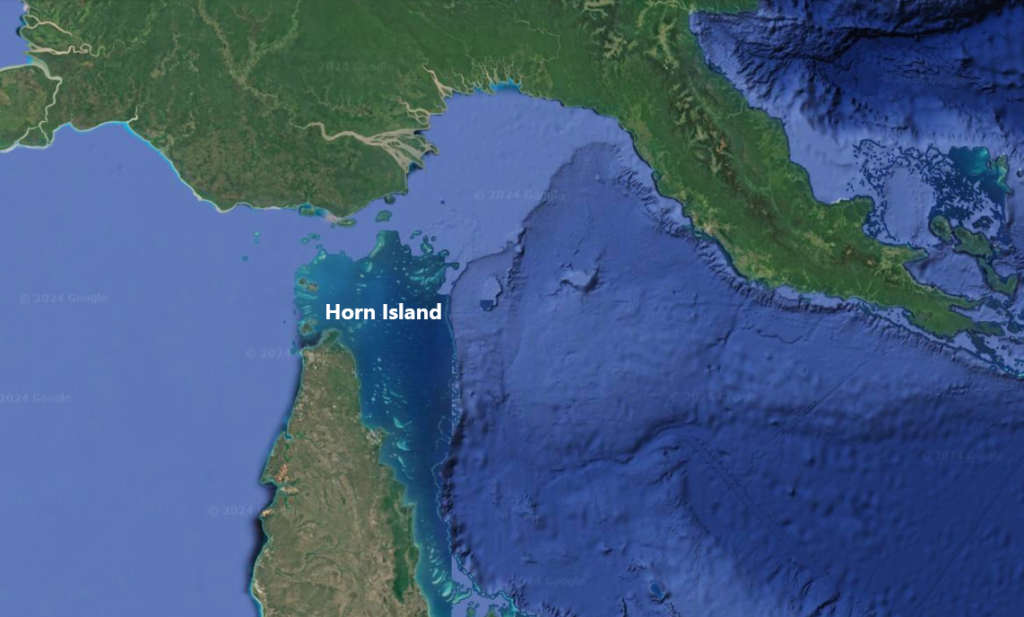Australia’s National Defence Strategy presents a central challenge to the ADF: deterring adversaries from projecting power through our northern approaches. To do this effectively, the ADF must maximise use of civilian infrastructure, particularly in northern Australia, where the local economy cannot always sustain necessary facilities alone.
A strong example of what needs to be done is making the most of Horn Island, in the Torres Strait.
In the 1980s and 1990s, the ADF mapped and assessed infrastructure across northern Australia. This initiative included extensive aerial surveys, satellite imagery and ground assessments, producing detailed maps of roads, bridges, ports, fuel storage, communication networks and more. Collaboration with government agencies and local stakeholders was key to ensuring accurate and valuable data, bolstering military readiness and community development.
However, by the late 1990s, shifting defence priorities and a focus on joint operations reduced these critical assessments, leaving gaps in our understanding of the infrastructure landscape that must now be addressed.
This landscape is rapidly changing with government and private infrastructure investment in northern Australia. And some old facilities—like those in Weipa, where dredging of the port will cease—are being decommissioned as commercial operations shut down, while others are nearing the end of their operational life.
Historically, Horn Island was a key military outpost, with two runways, ammunition storage and defensive installations. Today, it mainly supports regional commercial flights under the management of the Torres Shire Council. Its proximity to Papua New Guinea—makes it an ideal location for a forward military base.
Horn Island already has Jet A-1 fuel, commonly used by the RAAF, and a bulk fuel storage capacity of 600,000 litres at its pier. This infrastructure could be expanded to ensure the island remains self-sufficient during prolonged military operations, reducing logistical dependency that could hinder operational effectiveness and enhancing local resilience.
One of Horn Island’s most significant advantages is its ability to improve the capabilities of Cairns and Townsville within a unified northern defence posture. While Cairns serves as a naval hub for patrol boat operations, Horn Island could act as a forward support base, extending these vessels’ operational range and endurance. Using Horn Island for resupply and maintenance, patrol boats from Cairns could sustain longer missions in the Torres Strait and other northern waters. Its airfield could also extend the ranges of both crewed and uncrewed aircraft.
Maintaining Horn Island’s civilian airfield is commercially justified, but enhancing it may not be. The types of infrastructure that Defence could use for military purposes would no doubt also bolster community resilience across the Torres Strait Islands. But who would pay for such improvements?
The issue applies to much of northern Australia’s infrastructure. The ADF cannot reasonably be expected to alone pay for infrastructure development throughout northern Australia.
As a first step, the ADF must recommence systematic data collection on the region’s infrastructure. A comprehensive understanding of the infrastructure landscape is essential for ensuring operational readiness and resilience. By mapping existing facilities and assessing their capabilities, Defence can identify gaps and determine how best to enhance the strategic use of these assets.
Regular use of such infrastructure will not only enhance the ADF’s readiness but will also contribute to the viability of essential services in northern Australia. These benefits reinforce the argument for investing in upgrades, ensuring that Defence commitments align with local community needs.
The Australian government must adopt a holistic approach to the ADF’s requirements, prioritising ongoing maintenance of critical infrastructure that can support both military and civilian demands, especially in areas where commercial viability is limited. Such foresight is not merely a matter of defence strategy; it is an investment in the social and economic fabric of northern Australia.
By leveraging civilian infrastructure, Australia can significantly enhance its military capabilities and deterrence. The time for action is now, and a collaborative effort among Defence, government and local communities is required.

